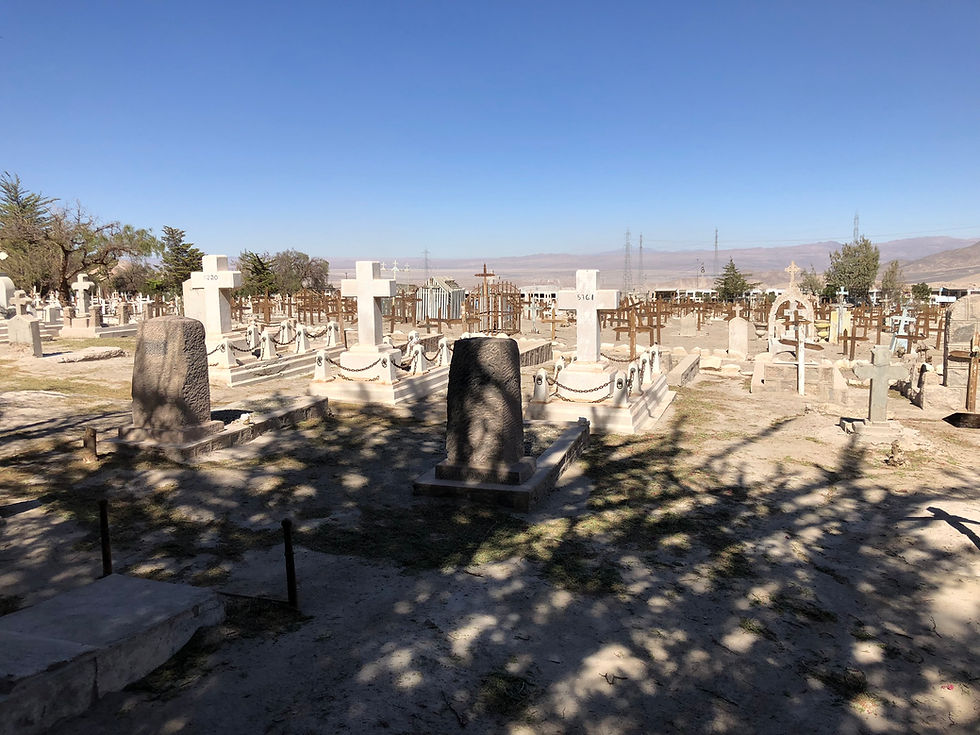What they don't each you about minor metals at Business School
- Lipmann Walton & Co Ltd

- Apr 28
- 3 min read
Have I said this before? ‘Concentrate on the kgs, and the tons will follow’.
This may be superannuated advice - but why shouldn’t Gen Z listen to Baby Boomer advice?
I know it’s counterintuitive, but if you want to grow a business (rather than steal one) you need to start with the small stuff. You might become an expert in something you never dreamt of…
So - strontium. Who trades strontium!?

If you’ve heard of the element at all, it might be because it’s ugly sister isotope, Strontium 90, was rumoured to be a contaminant in children’s milk in the 1950s.
Windscale in Cumberland (brightly rebranded as Sellafield in 1981) had the misfortune to have a nuclear meltdown in 1957 (the year of my birth). The same year ERNIE launched his Premium Bonds, and the year Sputnik circumnavigated the Earth at a low orbit, putting the fear of God into Granny in the Giles cartoons of that year.
She wasn’t the only one.
My godfather, Eric Austen (1922-1999), who created the first lapel badges of the peace sign in ceramic for the Second Aldermaston March in 1959, worried himself sick.
He wrote to the head of his daughter’s primary school on 1st November 1961
Dear Sir,
I should be grateful if you would allow my daughter Gea, not to have her milk allowance at school. I gather that the radioactive fallout in milk has now reached what is considered the danger level (if it stays that way for a year). For this reason I do not wish my child to imbibe her third of a pint.
Yours faithfully etc

I am happy to say the non-isotope of strontium metal is not particularly dangerous. Reduced from the mineral celestine, it is milled and calcified in a large cylindrical rotary kiln before being aluminothermically smelted. Because it is so prone to oxidise in air like calcium (with a tendency to decompose into ash) the trick is to tightly pack its fibrous metal strands as quickly as possible into hermetically sealed aluminium cans, or pouches, to shield it from the atmosphere. The old Soviet method was to sink the pieces into oil.
So, when I obtained an enquiry for a few kilos of Strontium metal, I was as unreasonably excited as I was trepidatious. I wasn't quite sure which kind of Strontium was required but not rich enough to turn down an enquiry for a kilo of anything. An end user seeking metal for a new application was to be cherished; and if they’d reached me, it meant they’d tried everyone else.
But where - without scouring the globe - to obtain a sufficiently small quantity of an unusual minor metal (at that time not covered by MMTA standards)?
The only answer was to seek it amongst friendly local users who might be induced to part with a drum – the smallest drum possible - which turned out to be 100 kgs net.
When I reported back, my new best customer was gratified and surprised I’d found it. So - with his agreement to purchase - all I had to do was collect it. This I did by driving west and throwing the drum onto the back seat of my old BMW – then driving north through the counties, reaching the plant just as the security guards were closing up for the night.
The consumer appeared to like it, and next ordered a ton, and then 20 tons. Soon we were supplying several hundred tons a year.
My message a young trader hoping to be a big shot, is to suggest you do not disdain an enquiry – even a small one - as you never know what you can learn.
I had seen many enquiries turned down when I worked for a rather wealthy London company in my prime, and I didn’t want to do the same.
And it helped, not having enough funding - I didn’t have the luxury of being able to say no without at least investigating.
Acorns into oak trees, kilos into tons - it's a good lesson.
But they I'm not sure they teach you how to trade strontium at Business School – that one you have to work out for yourself.
By Anthony Lipmann
Published in The Crucible (March 2025)




Comments